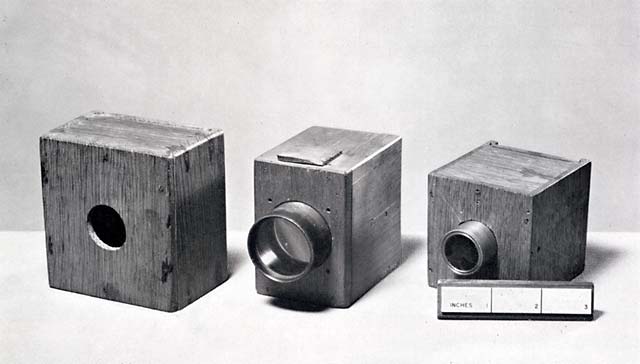William Henry Fox Talbot, The Pencil of Nature, 1844-1846
Fox Talbot's cameras, collection of the National Museum of Photography, Film and Television
Fox Talbot (1800-1877) was originally inspired in his experiments by his difficulties in assisted-drawing with a Camera Lucida. Not being able to master the technique involved, he began to consider how he might permanently fix the images on paper produced by a Camera Obscura. Fox Talbot sees both techniques as aids to drawing but hints at how fixed images derived from photographic techniques might have potential beyond 'naturally' recording images. Although he is interested as a scientist in achieving consistent results, he allows room for esthetic concerns:
“These tints, however, might undoubtedly be brought nearer to uniformity, if any great advantage appeared likely to result: but, several persons of taste having been consulted on the point, viz. which tint on the whole deserved a preference, it was found that their opinions offered nothing approaching to unanimity, and therefore, as the process presents us spontaneously with a variety of shades of colour, it was thought best to admit whichever appeared pleasing to the eye, without aiming at an uniformity which is hardly attainable.”
It seems clear to me that photography is both mechanical and creative and I don't see any inherent contradiction in that. Any art—and perhaps any human product—involves the use of tools, materials and processes, some of which may be mechanical and some not. Photography is far from being the objective 'pencil of nature' and some of Fox Talbot's early work already shows an awareness of the role the human operator plays in creating the camera, preparing the paper, mixing the chemicals, timing the exposure and positioning the camera. The camera and its related processes may be more complex than those employed in some arts, but the roles of imagination and human action are no less important.
